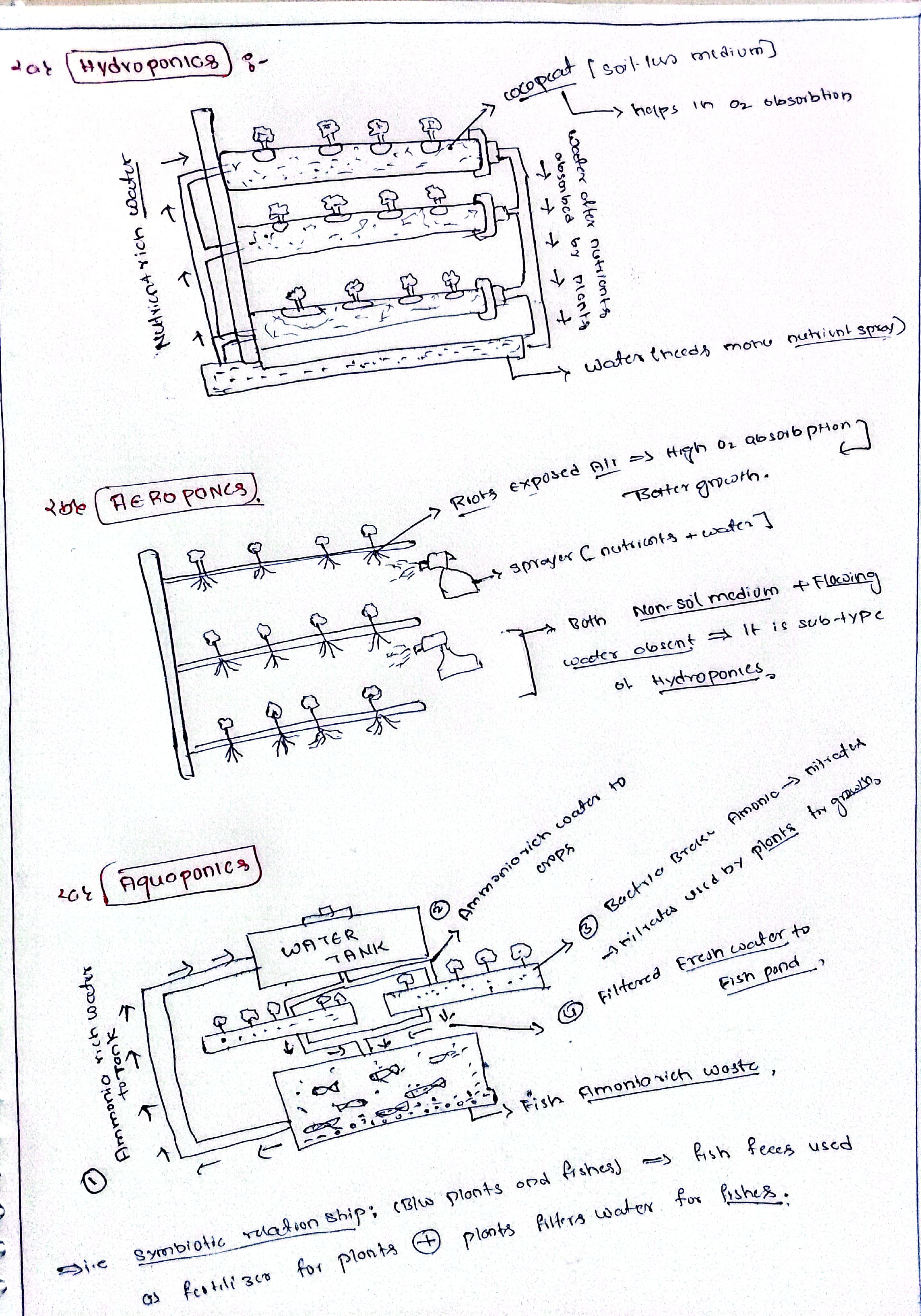| Demand of the question Introduction. What is vertical farming? Body. Discuss how it works, its advantages and disadvantages. Conclusion. Way forward. |
Vertical farming is the practice of growing crops indoors, on vertically inclined surfaces, under artificial conditions of light and temperature. It is done in a controlled environment, with the aim of optimising plant growth. It aims at higher productivity in smaller spaces and uses soil-less methods such as hydroponics, aquaponics and aeroponics.
How Vertical farming works?
Vertical farms have following main features:

- Lighting: In vertical farming crops are cultivated in stacked layers in a tower-like A perfect combination of natural and artificial lights is used to maintain the perfect light level in the room. Technologies such as rotating beds are used to improve lighting efficiency. This increases the amount of sunlight absorbed, therefore making photosynthesis very efficient.
- Growing medium: In vertical farming instead of soil, aeroponic, aquaponic or hydroponic growing mediums are used. Peat moss or coconut husks and similar non-soil mediums are very common in vertical farming. Plants are grown in a soilless mist that is sprayed from internal micro jets. Since in vertical farms the roots are uncovered and exposed to more oxygen, the plants/crops will be able to grow at a faster rate.
- A cloth medium: Finally the cloth medium is used for seeding, germination (when seeds sprout), growing and harvesting of plants.
Advantages of vertical farming:
- Increased crop yield: The main advantage of utilizing vertical farming technologies is the increased crop yield that comes with a smaller unit area of land requirement. The increased ability to cultivate a larger variety of crops at once is because crops do not share the same plots of land. Vertical farming allows for, in some cases, over ten times the crop yield per acre than traditional methods.
- Resistant to weather disruptions: Crops are resistant to weather disruptions because of their placement indoors. In other words less crops are lost to extreme or unexpected weather occurrences. The issue of adverse weather conditions is especially relevant for countries depending upon monsoon like India.
- Prevent ecosystem disruption: Because of its limited land usage, vertical farming is less disruptive to the native plants and animals, leading to further conservation of the local flora and fauna. Traditional farming is often invasive to the native flora and fauna because it requires such a large area of arable land.
- Environment conservation: Vertical farming can help in preventing climate change and conserve the environment. Deforestation and desertification caused by agricultural encroachment on natural biomes could be avoided. Producing food indoors reduces or eliminates conventional plowing, planting, and harvesting by farm machinery, protecting soil, and reducing emissions.
- Water conservation: Vertical farming allows to produce crops with 70-95% less water than required for normal cultivation. In addition, with the plants being grown in huge vertical greenhouses, the transpiration that will occur naturally will be harnessed and reused again for irrigation.
Disadvantages of vertical farming:
- Economic Viability: This type of farm depends heavily on modern engineering and architecture, as well as the application of different technologies. Building vertical farms in expensive buildings add to the total investment and operational costs.
- Interfere with Pollination: Vertical farming takes place in a controlled environment without the presence of insects. As such, the pollination process needs to be done manually, which will be labor intensive and costly.
- Labor Costs: In vertical farming, labor costs can be even higher due to their concentration in urban centres where wages are higher, as well as the need for more skilled labor. Automation in vertical farms, however, may lead to the need for fewer workers. Manual pollination may become one of the more labor-intensive functions in vertical farms.
- Disruption to the Rural Sector: Another foreseen challenge and disadvantage of vertical farming involves the potential for disrupting the rural sector, especially those communities with economies that are dependent on agriculture. Vertical farms can render traditional farming jobs obsolete. Farmers who do not have competencies in vertical farming would be left jobless. Communities dependent on agriculture would certainly suffer.
By 2050, around 80% of the world population is expected to live in urban areas, and the growing population will lead to an increased demand for food. The efficient use of vertical farming may perhaps play a significant role in preparing for such a challenge.






Types of vertical forming…